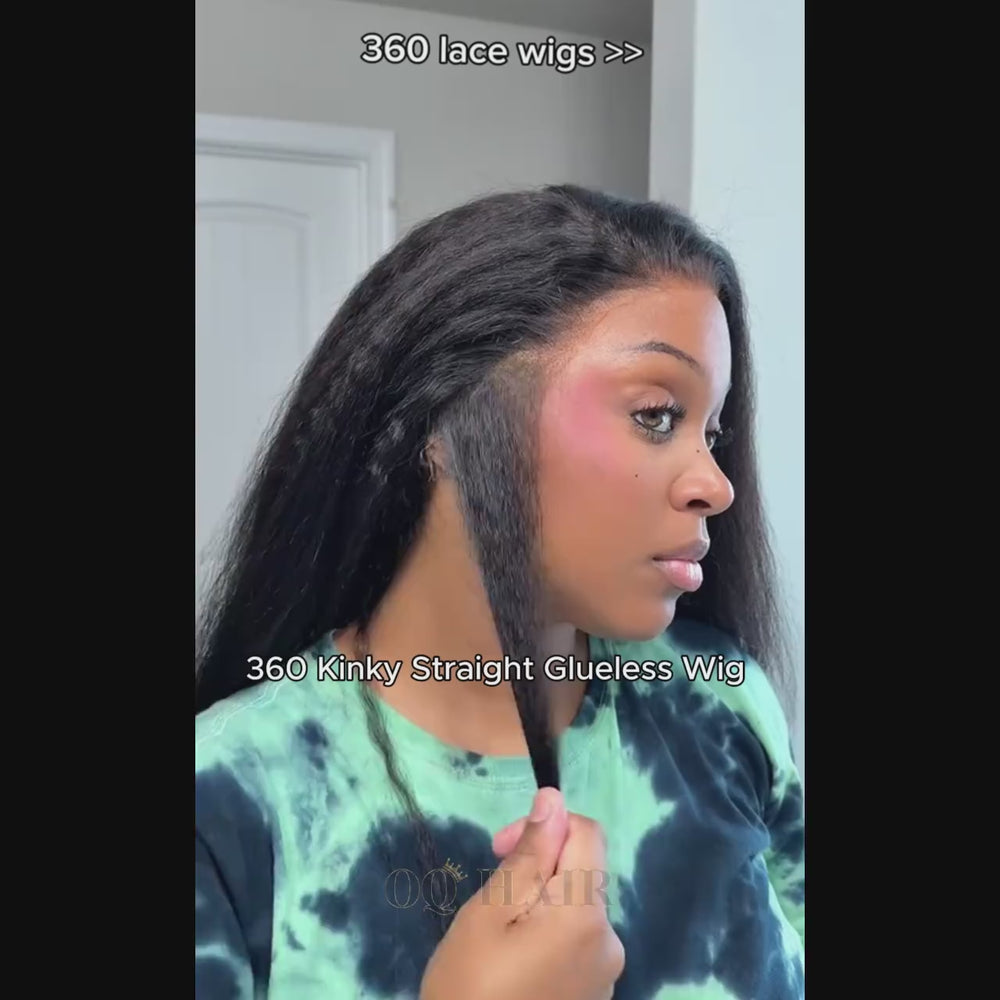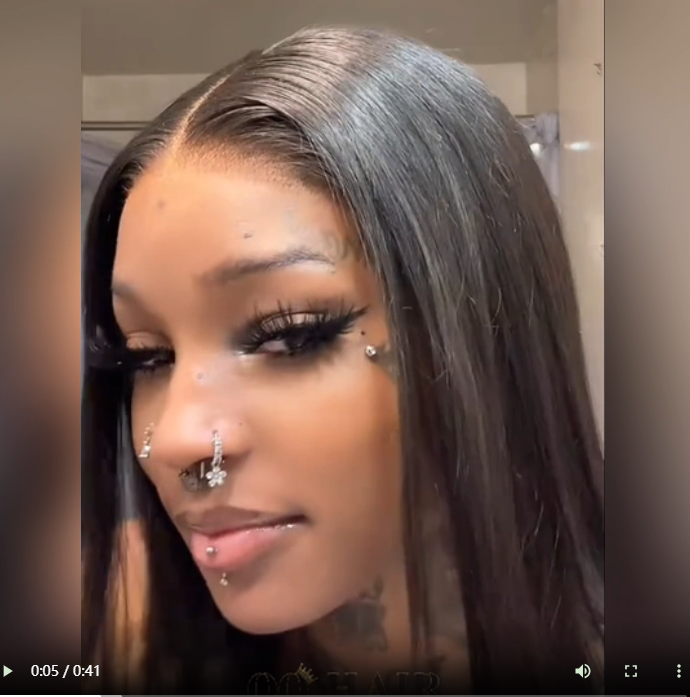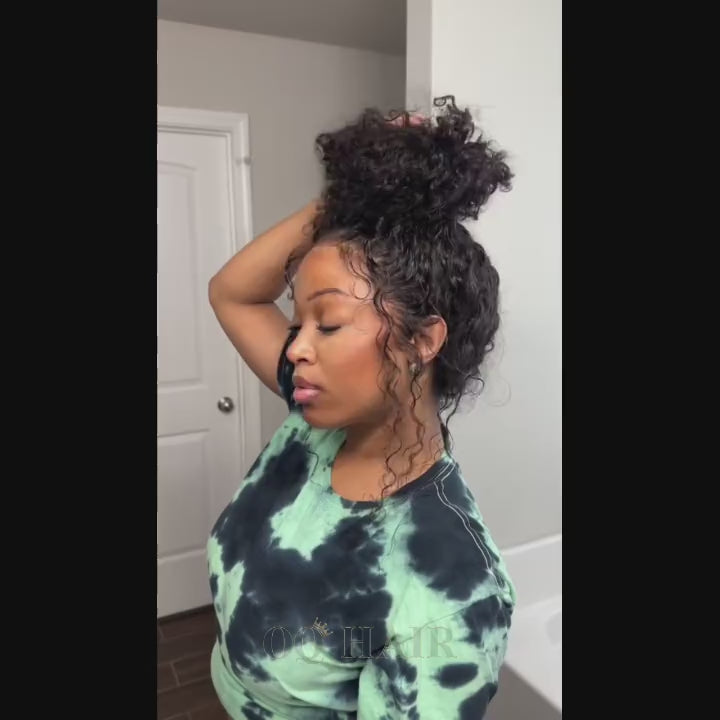Wig VS Weave: What is The Difference and How to Choose

What is a Wig?
A wig is a false covering made of human hair or synthetic fibers that covers the entire head. It is often used to change hairstyles quickly, cover hair loss, or fit in specific occasions. For example, fashionistas wear wigs to match their overall outfits, patients choose them to enhance their confidence, and British barristers adopt specific wigs in court to follow tradition.
There are many types of wigs, from half wigs (headband wigs, v-part wigs, u-part wigs, etc.) to lace wigs (lace front wigs, wear and go glueless wigs, etc.) each type has its own unique characteristics and uses. If you want to learn more about the different types of wigs, you can refer to this article: Different Types of Wigs.

What is a Weave?
Hair weaving is a technique that attaches human or synthetic hair to your natural hair to increase the length or thickness. Through this way, you can achieve a thicker or longer hairstyle. Compared to wigs, weave can last longer, quick weave can last for several weeks (2–5 weeks), and sew-in weave keeps even longer. However, this method is more suitable for people with thicker hair because fine or straight hair may be easily damaged during the weaving process due to its weak hair quality.
- Sew-in Weave: The hair strands are sewn to the braids with a needle and thread, similar to sewing clothes. This method is usually more secure and suitable for long-term wear.
- Quick Weave: The hair strands are fixed to the hair with a special glue. This method is quick to install, but the maintenance time is relatively short, and it is more suitable for short-term styling needs.
What is the Differences Between Weave and Wig?
Weaves are installed by sewing or gluing hair extensions to your natural hair or braid base. Wigs are worn over your head and are secured with clips, combs, adjustable straps inside the wig cap, or adhesive.
You can put on and take off wigs by yourself, but you will need to ask a professional hairstylist to apply and remove hair weaves.
Installation Time
The installation process of hair weaving usually takes a long time, about 4-6 hours, which is indeed more labor-intensive. In contrast, the installation of wigs is much faster. Especially for glueless lace wigs (such as Glueless Lace Wig), the wearing process only takes 1 minute, which is both time-saving and convenient. Lace frontal wigs that require adhesives take a little longer to install, generally taking about 1-3 hours.
Duration
Hair weaves can last for 6-8 weeks, whereas the longevity of wigs, especially lace frontal wigs secured with adhesive, is typically around 2-6 weeks.
Service Life
Typically, hair weaves can be reused up to three times. The service life of wigs varies depending on the material: human hair wigs can usually be used for 1-3 years, while synthetic fiber wigs have a shorter lifespan, generally about 4-6 months.
Diversity
Wigs have significant advantages in terms of styling diversity, especially glueless lace wigs. They are not only easy to wear, but also allow you to change your hairstyle every day and match it with different clothes to fully demonstrate your individual style. It is very suitable for fashion-conscious users. . Braided hair, on the other hand, is more suitable for people who maintain a unified style. It can continue to show a consistent hairstyle effect during wearing and is suitable for people who like a simple and stable style.
Maintenance
Weaving hair requires regular maintenance to ensure the health and quality of your own hair and hair extensions, and the maintenance process may be complicated. Wigs are relatively easy to maintain, which not only reduces the need for hair care but also keeps the wig in good condition through simple cleaning and care. It is very suitable for people who live a busy life or are not good at complex care.
Wig vs weave: How to choose
If you live a fast-paced life and like to change your look every day, a wig would be a better choice, especially a glueless wig, which can be put on in minutes. Weaves are more suitable for those who want to keep a fixed look for a long time. After installation, they can last for weeks without daily re-tending, which is very suitable for people who like simple and stable styles.
2. Budget
The initial cost of a wig is high, especially a high-quality human hair wig, which may require a large one-time investment, but its durability and diversity make it a long-term cost-effective investment. Relatively speaking, the single installation cost of weaves is lower, but it requires regular maintenance or re-installation, and the cumulative cost may be higher.
3. Natural Hair Condition
If your hair is sparse or soft, you may not be suitable for weaving, especially sew-in weave, because weaving requires tightly weaving hair strands to natural hair, which may pull the hair roots and cause further damage to the hair. Wigs are more gentle in this regard and cause almost no damage to the hair, especially for people with fragile or sparse hair.
4. Style Diversity
Wigs are far better than weaves in terms of style options, with more possibilities from length, color, to partition design. Lace wigs (such as the 360 glueless wig, lace front wig) support a variety of partition styles, allowing you to easily create various hairstyles. However, the color selection and styling flexibility of weaves are relatively limited, especially for partition styling, which may be greatly restricted.
5. Breathability
Weaves, especially sew-in weaves, are directly fixed on the hair and have better breathability, making them more suitable for summer wear. The breathability of wigs is closely related to the material of the wig cap. If you are worried that wearing a wig will make you feel stuffy, you can choose a breathable cap wig, which is both comfortable and natural.
Conclusion
In general, whether you choose a wig or a weave, you should make a judgment based on your lifestyle, budget, natural hair quality, and styling needs. Only by choosing a solution that suits you can you confidently show your most beautiful self on various occasions!









